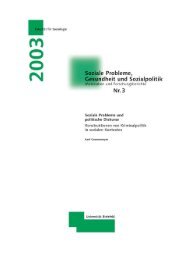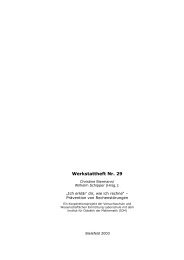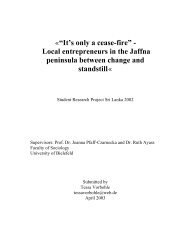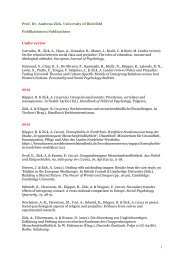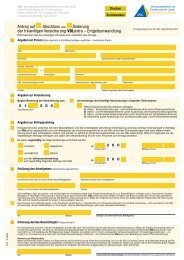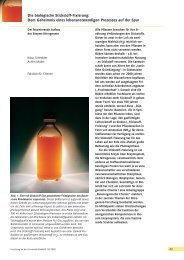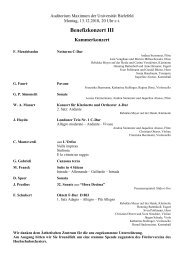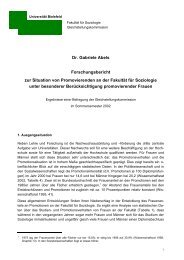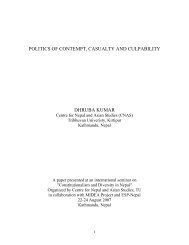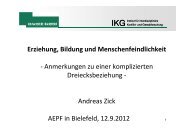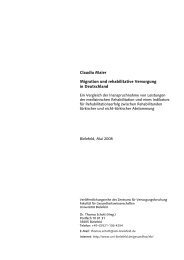Madheshi Nationalism and Restructuring the Nepali State
Madheshi Nationalism and Restructuring the Nepali State
Madheshi Nationalism and Restructuring the Nepali State
You also want an ePaper? Increase the reach of your titles
YUMPU automatically turns print PDFs into web optimized ePapers that Google loves.
federalism, on increment of <strong>the</strong> <strong>Madheshi</strong>s’ say in national politics, <strong>and</strong> on inclusion of <strong>the</strong><br />
<strong>Madheshi</strong>s in <strong>the</strong> state apparatus, <strong>and</strong> on affirmative actions are more sharp <strong>and</strong> powerful.<br />
Federalism<br />
Most dem<strong>and</strong>s of <strong>the</strong> <strong>Madheshi</strong> movement revolve around its central thrust, federalism.<br />
Federalism <strong>and</strong> its form are contested at multiple levels. Nepal democracy survey 2007 reveals a<br />
clear division that majority respondents of hill origin favoured retention of unitary system<br />
whereas <strong>the</strong> majority respondents belonging to plains castes <strong>and</strong> Muslims preferred a federal<br />
system. Never<strong>the</strong>less <strong>the</strong> interim coalition government had already proclaimed that <strong>Nepali</strong> state<br />
would be restructured into <strong>the</strong> federal form by a new constitution to be framed after <strong>the</strong> election<br />
of Constituent Assembly. There is no unanimity among <strong>the</strong> forces championing for federalism on<br />
its form. The NSP has already proposed a region-based federalism dividing <strong>the</strong> Tarai into two<br />
parts, East Tarai <strong>and</strong> West Tarai. The CPN (Maoist) also proposed two Tarais – Madhesh <strong>and</strong><br />
Tharuwan –but <strong>the</strong> criteria it suggested is a combination of ethnicity <strong>and</strong> region. The MJF’s<br />
dem<strong>and</strong> is to make <strong>the</strong> Tarai a single unit, <strong>the</strong> Madhesh province.<br />
Debate of making Madhesh as a single or many units in <strong>the</strong> proposed scheme of federalism lies<br />
on setting <strong>the</strong> principle of forming federal units – homogeneous or heterogeneous. If<br />
heterogeneity as criteria for constituting federal units is taken as a model, <strong>the</strong> present vertical<br />
division of <strong>the</strong> country – five development regions, fourteen zones <strong>and</strong> 75 districts – is perfect to<br />
remould <strong>the</strong> existing territories into federal structure. There are only 12 districts where a<br />
particular caste/ethnic group constitutes a majority community (Chhetri in 7, Gurung in 2 <strong>and</strong><br />
each of Tamang, Tharu <strong>and</strong> Newar in 1 district) in total population of <strong>the</strong> respective districts. In<br />
this scheme, <strong>the</strong> Madhesh will become a single federal unit of diverse population, plains castes,<br />
Pahadis, plains Janjatis <strong>and</strong> Muslims. The political purpose of discontent against one Madhesh<br />
by <strong>the</strong> Tharus is understood that it will not serve <strong>the</strong>ir interests. Since <strong>the</strong> plains castes constitute<br />
a majority of 59% (28% plain Janjati <strong>and</strong> 13% Muslim) among <strong>the</strong> non-hill origin people of <strong>the</strong><br />
20 Tarai districts, it will be change of <strong>the</strong>ir master only, from hill high castes to plains high<br />
castes, if <strong>the</strong> idea of ‘one Madhesh one Pradesh’ is structured.<br />
Federalism is in essence a remedy of <strong>and</strong> respect to diversity. Constituting of homogeneous<br />
federal units helps to reduce communal tension <strong>and</strong> clash. Avoidance of <strong>the</strong> possibility of<br />
communal violence in <strong>the</strong> future should be taken as one of <strong>the</strong> prime considerations while<br />
restructuring <strong>the</strong> <strong>Nepali</strong> state into <strong>the</strong> federal units. For <strong>the</strong> creation of homogeneous federal<br />
units, <strong>the</strong> boundary of <strong>the</strong> present vertical divisions of <strong>the</strong> country into five development regions,<br />
14 zones <strong>and</strong> 75 districts should be deleted first. This means, in <strong>the</strong> context of Tarai, taking out<br />
<strong>the</strong> l<strong>and</strong>scape of <strong>the</strong> north of Siwalik from Madhesh which in turns help to rejuvenate cultural<br />
territories of <strong>the</strong> diverse plains origin groups of <strong>the</strong> Tarai. Making <strong>the</strong> surrounding areas of <strong>the</strong><br />
East-West high way as a separate unit under <strong>the</strong> union government fur<strong>the</strong>r contributes to <strong>the</strong><br />
proposal of making cultural territories of many federal units. Taking into consideration of<br />
diversity of <strong>the</strong> Madhesh in terms of culture, language <strong>and</strong> religion, making one Madhesh many<br />
Pradeshs is sensible while constructing federal units.<br />
The Madhesh, in <strong>the</strong> context of <strong>the</strong> rise of regional based ethno-nationalism, is going to be<br />
different from <strong>the</strong> past. Increment of <strong>the</strong> <strong>Madheshi</strong>s’ share in national politics through an<br />
electoral system which ensures proportional representation based on <strong>the</strong> strength of population<br />
11



